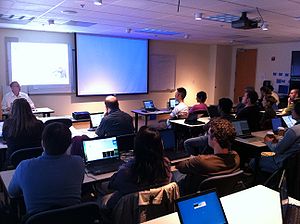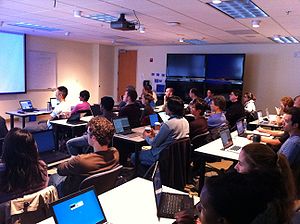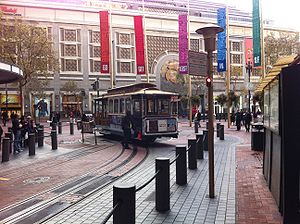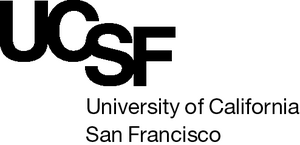Difference between revisions of "Events:UCSF-Slicer-Training-11-2010"
m (Text replacement - "[http://www.na-mic.org/Wiki/images/" to "[https://na-mic.org/w/images/") |
|||
| (17 intermediate revisions by 5 users not shown) | |||
| Line 1: | Line 1: | ||
| − | + | [[Image:UCSF_Event1.jpg|thumb|300px|Class photo 1]] | |
| − | [[Image:UCSF_Event1.jpg]] | + | [[Image:UCSF_Event2.jpg|thumb|300px|Class photo 2]] |
| − | [[Image:UCSF_Event2.jpg]] | + | [[Image:UCSF_Event3.jpg|thumb|300px|Cable car]] |
| − | [[Image:UCSF_Event3. | ||
| + | {| class="wikitable2" border="1" cellpadding="8" cellspacing="1" | ||
| + | | colspan="4"|[[image:UCSF-Logo.png|300px|center]] | ||
| + | |- | ||
| + | | style="width:25%" |[[Image:NAMIC.jpg]] | ||
| + | | style="width:25%" |[[Image:Logo_nac.gif]] | ||
| + | | style="width:25%" |[[Image:NCIGTlogo.gif]] | ||
| + | | style="width:25%" |[[Image:Catalyst_logo_final.jpg|150px]] | ||
| + | |} | ||
| + | == Logistics == | ||
Location: [http://www.radiology.ucsf.edu/china-basin-imaging UCSF (3rd floor) China basin campus] | Location: [http://www.radiology.ucsf.edu/china-basin-imaging UCSF (3rd floor) China basin campus] | ||
| Line 12: | Line 20: | ||
'''Registration''': To sign-up for this event, please fill in the [[media:RegistrationForm_SlicerWorkshop_UCSF_Nov9_2010.doc | registration form]] and send it by e-mail to Jason Crane, PhD [jason.crane at ucsf.edu] before Friday November 5. | '''Registration''': To sign-up for this event, please fill in the [[media:RegistrationForm_SlicerWorkshop_UCSF_Nov9_2010.doc | registration form]] and send it by e-mail to Jason Crane, PhD [jason.crane at ucsf.edu] before Friday November 5. | ||
| − | == | + | == Agenda == |
*8:45-9:00 am Computer setup assistance by the instructors | *8:45-9:00 am Computer setup assistance by the instructors | ||
*9:00-9:15 am Welcome and Goals of the Workshop (Ron Kikinis/Sonia Pujol) | *9:00-9:15 am Welcome and Goals of the Workshop (Ron Kikinis/Sonia Pujol) | ||
| − | *9:15-9:45 am Introduction to NA-MIC and the Slicer community (Ron Kikinis) | + | *9:15-9:45 am [[media:Kikinis-NA-MIC-2010-09-20.ppt|Introduction to NA-MIC]] and [[media:Kikinis-Slicer Community-2010-09-20.ppt|the Slicer community]] (Ron Kikinis) |
| − | *9:45-10:45 am Data Loading and 3D Visualization (part1) (Sonia Pujol) | + | *9:45-10:45 am [[media:Slicer3_DataLoadingAndVisualization_UCSF2010_SoniaPujol.pdf | Data Loading and 3D Visualization ]] (part1)(Sonia Pujol) |
*10:45-11:00 am Coffee break | *10:45-11:00 am Coffee break | ||
| − | *11:00-11:45 am Data Loading and 3D Visualization (part 2) (Sonia Pujol) | + | *11:00-11:45 am [[media:Slicer3_DataLoadingAndVisualization_UCSF2010_SoniaPujol.pdf | Data Loading and 3D Visualization ]] (part 2) (Sonia Pujol) |
*11:45 am-1:00 pm Lunch | *11:45 am-1:00 pm Lunch | ||
| − | *1:00-2:00 pm Image Registration (Sonia Pujol) | + | *1:00-2:00 pm [[media:ManualRegistration_UCSF2010_DominikMeier.pdf | Image Registration ]] (Sonia Pujol) |
| − | *2:00-3:00 pm Diffusion Tensor Imaging Analysis: from DWI to DTI data (Sonia Pujol) | + | *2:00-3:00 pm [[media:DiffusionMRITutorial_UCSF2010_SoniaPujol.pdf | Diffusion Tensor Imaging Analysis: from DWI to DTI data ]](Sonia Pujol) |
*3:00-3:15 pm Coffee Break | *3:00-3:15 pm Coffee Break | ||
| − | *3:15-4:15 pm Diffusion Tensor Imaging Analysis: from DTI data to 3D fiber bundles (Sonia Pujol) | + | *3:15-4:15 pm [[media:DiffusionMRITutorial_UCSF2010_SoniaPujol.pdf | Diffusion Tensor Imaging Analysis: from DTI data to 3D fiber bundles ]] (Sonia Pujol) |
*4:15-4:30 pm MR Spectroscopy module in Slicer (Jason Crane) | *4:15-4:30 pm MR Spectroscopy module in Slicer (Jason Crane) | ||
*4:30-5:00 pm Questions from the audience and concluding remarks | *4:30-5:00 pm Questions from the audience and concluding remarks | ||
| + | |||
| + | == Notes on the Nrrd file format== | ||
| + | |||
| + | The Nrrd file format, which is part of the NA-MIC kit, accurately represents N-dimensional raster information for scientific visualization and medical image processing. | ||
| + | This format is used in Slicer to represent the necessary information about a DWI image volume, its anatomical orientation, and all the DWI-specific acquisition parameters for estimating the diffusion tensors. A detailed description of the Nrrd file format usage for DWI images and DTI data can be found [http://wiki.na-mic.org/Wiki/index.php/NAMIC_Wiki:DTI:Nrrd_format here]. | ||
| + | |||
| + | The [https://www.slicer.org/wiki/Modules:DicomToNRRD-3.6 DicomToNrrd module] in Slicer can be used to convert Dicom data into Nrrd. A detailed [https://na-mic.org/w/images/7/77/SlicerTraining9_DTI-FromDicomToNrrd.ppt tutorial] describes how to construct a nhdr file from a set of images, which can be in Dicom or in other format such as Nifti, and a list of known gradients, using the Teem Library. | ||
== Local Organizers== | == Local Organizers== | ||
| Line 56: | Line 71: | ||
[http://www.surveymonkey.com/s/GZDXKXQ Click here to take the Slicer3 Training Survey] | [http://www.surveymonkey.com/s/GZDXKXQ Click here to take the Slicer3 Training Survey] | ||
| + | == Slicer Community == | ||
| + | Participants are invited to join the [http://www.slicer.org/pages/Mailinglist Slicer user and Slicer developer community] for questions and feature requests related to the software. | ||
[[Events#2010|Back to Events 2010]] | [[Events#2010|Back to Events 2010]] | ||
Latest revision as of 18:27, 10 July 2017
Home < Events:UCSF-Slicer-Training-11-2010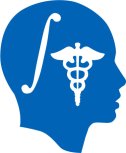
|

|
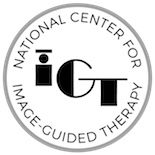
|

|
Contents
Logistics
Location: UCSF (3rd floor) China basin campus
Date: Tuesday November 9, 2010
Registration: To sign-up for this event, please fill in the registration form and send it by e-mail to Jason Crane, PhD [jason.crane at ucsf.edu] before Friday November 5.
Agenda
- 8:45-9:00 am Computer setup assistance by the instructors
- 9:00-9:15 am Welcome and Goals of the Workshop (Ron Kikinis/Sonia Pujol)
- 9:15-9:45 am Introduction to NA-MIC and the Slicer community (Ron Kikinis)
- 9:45-10:45 am Data Loading and 3D Visualization (part1)(Sonia Pujol)
- 10:45-11:00 am Coffee break
- 11:00-11:45 am Data Loading and 3D Visualization (part 2) (Sonia Pujol)
- 11:45 am-1:00 pm Lunch
- 1:00-2:00 pm Image Registration (Sonia Pujol)
- 2:00-3:00 pm Diffusion Tensor Imaging Analysis: from DWI to DTI data (Sonia Pujol)
- 3:00-3:15 pm Coffee Break
- 3:15-4:15 pm Diffusion Tensor Imaging Analysis: from DTI data to 3D fiber bundles (Sonia Pujol)
- 4:15-4:30 pm MR Spectroscopy module in Slicer (Jason Crane)
- 4:30-5:00 pm Questions from the audience and concluding remarks
Notes on the Nrrd file format
The Nrrd file format, which is part of the NA-MIC kit, accurately represents N-dimensional raster information for scientific visualization and medical image processing. This format is used in Slicer to represent the necessary information about a DWI image volume, its anatomical orientation, and all the DWI-specific acquisition parameters for estimating the diffusion tensors. A detailed description of the Nrrd file format usage for DWI images and DTI data can be found here.
The DicomToNrrd module in Slicer can be used to convert Dicom data into Nrrd. A detailed tutorial describes how to construct a nhdr file from a set of images, which can be in Dicom or in other format such as Nifti, and a list of known gradients, using the Teem Library.
Local Organizers
- Jason Crane, PhD, Department of Radiology and Biomedical Imaging, UCSF
- Sarah Nelson, PhD, Department of Radiology and Biomedical Imaging, UCSF
- Daniel Rubin, MD, MS, Department of Radiology, Stanford University
Teaching Faculty
- Ron Kikinis, M.D., Surgical Planning Laboratory, Brigham and Women's Hospital, Harvard Medical School
- Sonia Pujol, Ph.D., Surgical Planning Laboratory, Brigham and Women's Hospital, Harvard Medical School
- Nobuhiko Hata, Ph.D., Surgical Planning Laboratory, Brigham and Women's Hospital, Harvard Medical School
Preparation for the Workshop
The workshop combines oral presentations and instructor-led hands-on sessions with the participants working on their own laptop computers. All participants are required to come with their own laptop computer and install the software and datasets prior to the event.. A minimum of 1 GB of RAM (2 GB if possible) and a dedicated graphic accelerator with 64mb of on board graphic memory are required.
Please install the Slicer3.6.1 version appropriate to the laptop computer you'll be bringing to the tutorial:
- Windows: Slicer3-3.6.1-2010-08-23-win32.exe
- Linux 64: Slicer3-3.6.1-2010-08-23-linux-x86_64
- Linux 32: Slicer3-3.6.1-2010-08-20-linux-x86
- Mac Darwin: Slicer3-3.6.1-2010-08-20-darwin-x86
Please download the 3D Visualization dataset,Registration dataset and Diffusion dataset in preparation for the workshop.
Slicer3 Training Survey
Click here to take the Slicer3 Training Survey
Slicer Community
Participants are invited to join the Slicer user and Slicer developer community for questions and feature requests related to the software.
Back to Events 2010
